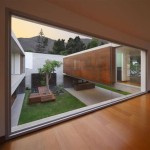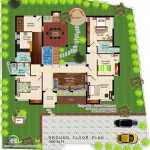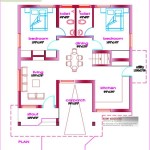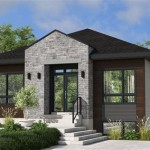```html
Best Selling One Story Home Plans
Single-story home plans, also known as ranch-style homes, are consistently popular among homebuyers for their accessibility, convenience, and adaptability to various lifestyles. Their enduring appeal stems from several factors, including ease of maintenance, open floor plans, and suitability for aging in place. This article explores the attributes of best-selling one-story home plans, highlighting key design features and considerations that contribute to their widespread adoption.
The demand for one-story homes often reflects a preference for simplicity and practicality. Eliminating stairs caters to diverse needs, including families with young children, individuals with mobility limitations, and those seeking a more manageable living space. Furthermore, single-story designs often integrate seamlessly with the surrounding landscape, promoting indoor-outdoor living and fostering a sense of connection with nature.
Market trends indicate a growing interest in efficient layouts and flexible spaces. Best-selling one-story plans prioritize functionality, incorporating features such as open-concept living areas, well-appointed kitchens, and private bedroom suites. Energy efficiency is also a crucial consideration, with many popular designs incorporating sustainable building materials and energy-saving technologies.
Accessibility and Universal Design Principles
Accessibility is a primary driver behind the popularity of single-story homes. The absence of stairs eliminates a significant barrier for individuals with mobility limitations, making the home more accessible to people of all ages and abilities. Best-selling plans often incorporate universal design principles, which aim to create spaces that are usable by the widest range of people, regardless of their abilities.
Universal design features commonly found in one-story homes include wider doorways and hallways, allowing for easy wheelchair navigation. Lever-style door handles are easier to operate than traditional knobs, and roll-in showers eliminate the need to step over a threshold. Adjustable-height countertops and sinks in the kitchen and bathrooms can further enhance accessibility. These features not only benefit individuals with disabilities but also make the home more convenient and comfortable for everyone.
Beyond specific design elements, the overall layout of a one-story home can contribute to its accessibility. Open floor plans create a sense of spaciousness and allow for easy movement between rooms. This is particularly beneficial for individuals who use wheelchairs or walkers. Strategic placement of doorways and hallways can also minimize the need for tight turns or awkward maneuvering.
Considerations for aging in place extend beyond basic accessibility. Adequate lighting, slip-resistant flooring, and grab bars in bathrooms can help prevent falls and promote safety. Smart home technology, such as voice-activated lighting and temperature control, can also make the home more convenient and comfortable for older adults. Choosing a one-story home allows homeowners to remain in their residence comfortably and safely as their needs change over time.
Open Floor Plans and Flexible Living Spaces
Open floor plans are a hallmark of many best-selling one-story home designs. These layouts typically combine the living room, dining room, and kitchen into a single, unified space. This creates a sense of spaciousness and promotes social interaction. Open floor plans are particularly popular with families, as they allow parents to easily supervise children while cooking or working in the living area.
The flexibility of open floor plans is another key advantage. These spaces can be easily adapted to suit different needs and lifestyles. Furniture can be rearranged to create distinct zones for different activities, such as reading, watching television, or entertaining guests. The open layout also allows for easy expansion or remodeling in the future.
In addition to open-concept living areas, best-selling one-story plans often incorporate flexible living spaces that can be used for a variety of purposes. These spaces may include home offices, media rooms, exercise rooms, or guest bedrooms. The ability to customize these spaces to meet specific needs is a significant selling point for many homebuyers.
The integration of indoor and outdoor living spaces is another common feature of popular one-story home plans. Patios, decks, and courtyards provide opportunities for outdoor relaxation and entertainment. Large windows and sliding glass doors blur the lines between the interior and exterior, creating a sense of connection with nature. This design approach maximizes natural light and ventilation, contributing to a healthier and more comfortable living environment.
Energy Efficiency and Sustainable Design
Energy efficiency is an increasingly important consideration for homebuyers, and best-selling one-story home plans often incorporate features that reduce energy consumption and lower utility bills. These features may include high-performance windows and insulation, energy-efficient appliances, and solar panels.
Proper insulation is crucial for maintaining a comfortable indoor temperature and reducing energy waste. Well-insulated walls, ceilings, and floors can significantly reduce heating and cooling costs. High-performance windows with low-E coatings can further reduce energy loss and improve thermal comfort.
Energy-efficient appliances, such as refrigerators, washing machines, and dishwashers, can also contribute to significant energy savings. Look for appliances that are Energy Star certified, as these products meet strict energy efficiency standards. LED lighting is another energy-saving option that can significantly reduce electricity consumption.
Sustainable design principles are also gaining popularity in the housing market. These principles focus on minimizing the environmental impact of the home, from construction to occupancy. Sustainable building materials, such as recycled content flooring and low-VOC paints, can reduce the environmental footprint of the home. Water-saving fixtures, such as low-flow toilets and showerheads, can conserve water and lower water bills.
Solar panels are an increasingly popular option for homeowners who want to generate their own electricity. Solar panels can significantly reduce reliance on the grid and lower electricity bills. In some cases, homeowners may even be able to sell excess electricity back to the grid.
The orientation of the home on the lot can also impact energy efficiency. Orienting the home to maximize solar gain in the winter and minimize solar gain in the summer can reduce heating and cooling costs. Proper landscaping can also provide shade and reduce the need for air conditioning.
In addition to these features, best-selling one-story home plans often incorporate smart home technology that allows homeowners to monitor and control energy consumption. Smart thermostats can automatically adjust the temperature based on occupancy patterns, while smart lighting systems can dim the lights when natural light is abundant. These technologies can help homeowners save energy and reduce their environmental impact.
The factors outlined above contribute significantly to the success of one-story home plans. The convergence of accessibility, flexible design, and energy efficiency underscores the ongoing demand for these types of residences.
```
Farmhouse Home Plan House 165 1090 The Collection

Great House Plans Have Rooms Sater Design Collection

Pin Page

Heritage House Plan

Plan 86144 Southern Style With 5 Bed 4 Bath 2 Car Garage

Plan 2578dh No Wasted Space

Traditional Plan 2 300 Square Feet 3 Bedrooms 5 Bathrooms 2559 00345

One Story Homes Living House Plans And More

Design Your Own House Floor Plans Roomsketcher

Floor Plans








